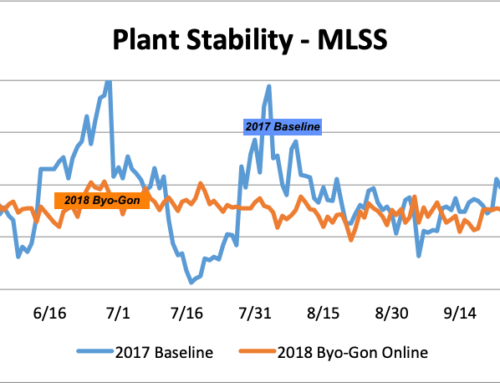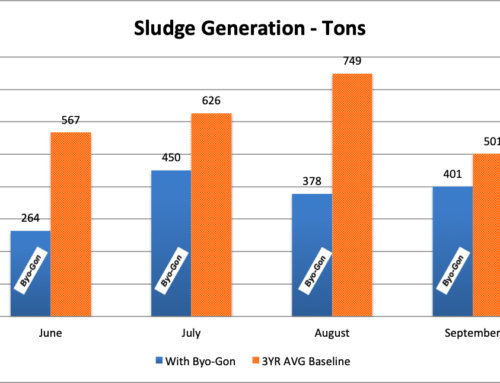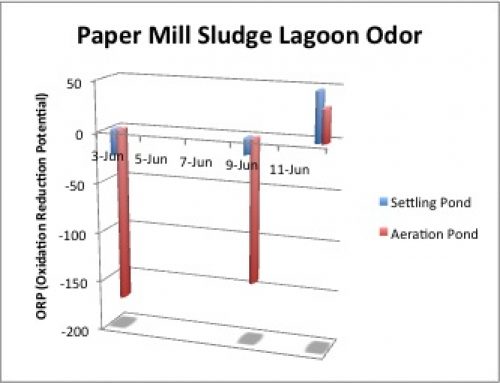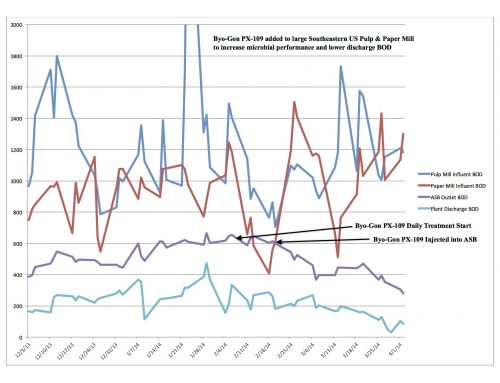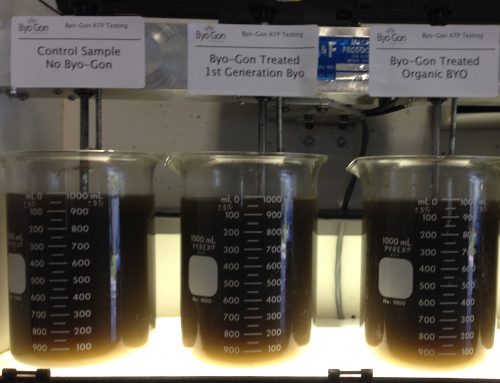Improved treatment plant performance in the ASB during cold weather. Aerated stabilization basins (ASBs) are utilized by many large facilities to successfully treat high BOD effluent prior to discharge. These basins are generally very large in size and volume and they perform well in warm weather conditions. During the cold winter weather biological activity can slow – causing problems with excess sludge deposition and challenges in meeting effluent compliance requirements.
Some plants have to curtail production or use expensive oxidizers (such as hydrogen peroxide) to treat the incoming BOD in hopes of achieving permit compliance.
One plant in the southern US recognized that their WWTP was not performing up to standard and effluent quality could be negatively impacted. They were familiar with the ability of Byo-Gon PX-109 to digest accumulated sludge in their ASB and saw improved BOD and TSS performance during these treatment periods. An application of the product was introduced into the surface of the ASB via a boat in late January when BOD removal efficiency had dropped to less than 60%.
Within a few days, the plant was able to return to normal discharge BOD levels for the plant, avoid production blowback, and maintain effluent quality within permit limits during the cold winter months.


